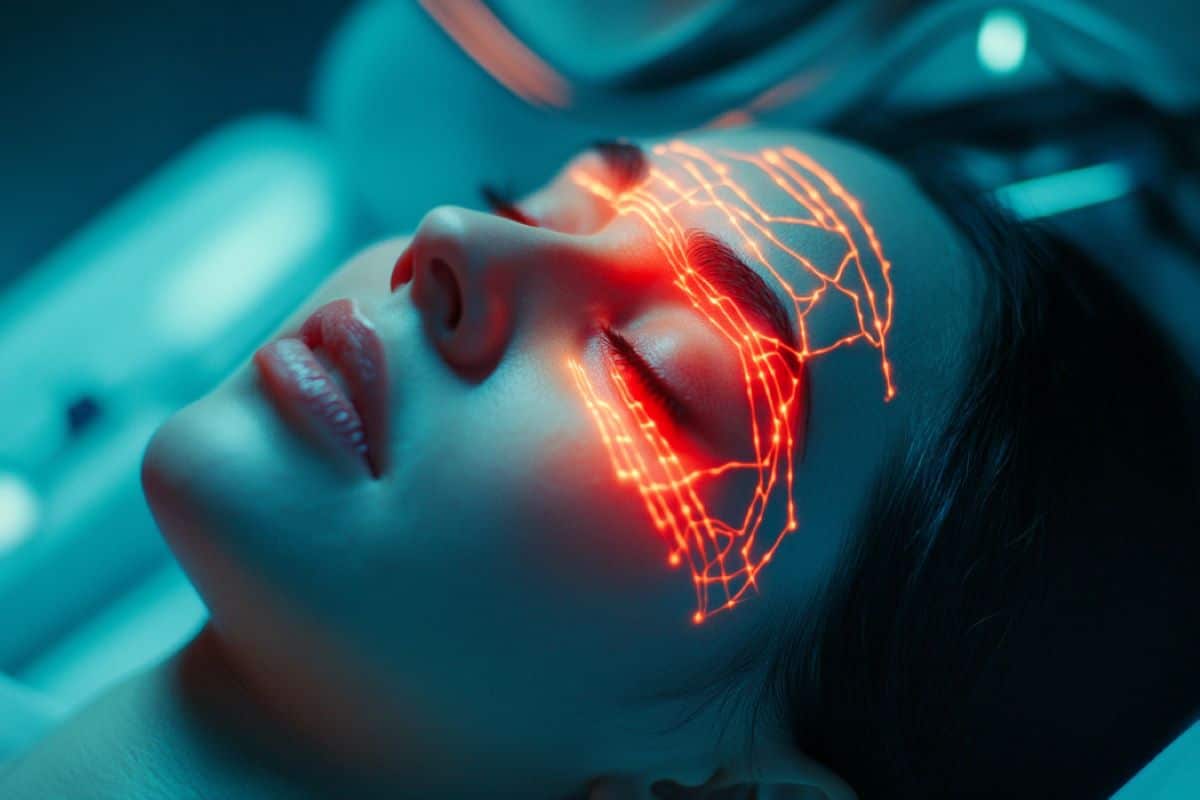Didn't your competent? doctor figure this might help stroke and start using it a long time ago? NO? So, you don't have a functioning stroke doctor, do you?
My God, the absolute incompetence in the stroke medical world that can't figure out how to help stroke survivors recover! It's not in your failed medical training, so get the training changed.
Send me hate mail on this: oc1dean@gmail.com. I'll print your complete statement with your name and my response in my blog. Or are you afraid to engage with my stroke-addled mind? I would like to know why you aren't looking at past research to get survivors recovered!
Infrared Light Therapy Shows Promise for Brain Injury Recovery
Summary: Scientists have found that transcranial infrared light therapy may promote tissue repair after mild traumatic brain injury (mTBI). In animal studies, brief daily infrared treatments reduced harmful inflammatory activity and cell death in the brain post-injury. The therapy led to improved cognitive and balance function four weeks later, especially with 810nm infrared light.
This research could pave the way for a new therapeutic option for mTBI, where treatments are limited. The team now aims to develop a medical device to deliver this innovative therapy to patients with brain or spinal cord injuries.
Key Facts:
- Transcranial infrared light therapy reduces inflammation and cell death post-mTBI.
- The treatment improved cognitive and balance functions in animal models.
- 810nm infrared light showed superior recovery outcomes compared to other wavelengths.
Source: University of Birmingham
Birmingham scientists have shown light therapy delivered transcranially (though the skull) can aid tissue repair after mild traumatic brain injury (mTBI).
Their research, published today in Bioengineering & Translational Medicine, indicates that this novel method could result in a new treatment option in an area of medicine that currently has few, if any, treatment options.
Traumatic brain injury (mTBI) results when the initial trauma of head injury is magnified by a complex set of inflammatory changes that occur in the brain. These secondary processes, which take place from minutes to hours after head injury, can dramatically worsen outcomes for patients.

The method invented by scientists at the University of Birmingham, U.K. and patented by University of Birmingham Enterprise aims to protect against this secondary damage, and stimulate faster, and better recovery for patients.
In the study, the Birmingham team, comprising researchers Professor Zubair Ahmed, Professor Will Palin, Dr Mohammed Hadis and surgeons Mr Andrew Stevens and Mr David Davies, examined the effect of two wavelengths of near infrared light (660nm and 810nm) on recovery following injury.
The study in animal models used daily two-minute bursts of infrared light, delivered by a laser, for three days post-injury.
The findings showed significant reductions in the activation of astrocytes and microglial cells, which are heavily implicated in the inflammatory processes in the brain that follow head trauma, and significant reductions in biochemical markers of apoptosis (cell death).
At four weeks, there were significant improvements in performance in functional tests involving balance and cognitive function. The red light therapy also accelerated recovery compared to controls, with superior outcomes for light with a wavelength of 810nm.
The study builds on research published earlier this year which showed near infrared light delivered directly to the site of spinal cord injury both improves survival of nerve cells and stimulates new nerve cell growth.
Professor Ahmed, who led the study, said: “We want to develop this method into a medical device that can be used to enhance recovery for patients with traumatic brain or spinal cord injury, with the aim of improving outcomes for patients.”
The researchers are seeking commercial partners to co-develop the device and take it to market.
About this TBI and neurotech research news
Author: Ruth Ashton
Source: University of Birmingham
Contact: Ruth Ashton – University of Birmingham
Image: The image is credited to Neuroscience News
Original Research: Open access.
“Photobiomodulation improves functional recovery after mild traumatic brain injury” by Zubair Ahmed et al. Bioengineering & Translational Medicine
No comments:
Post a Comment